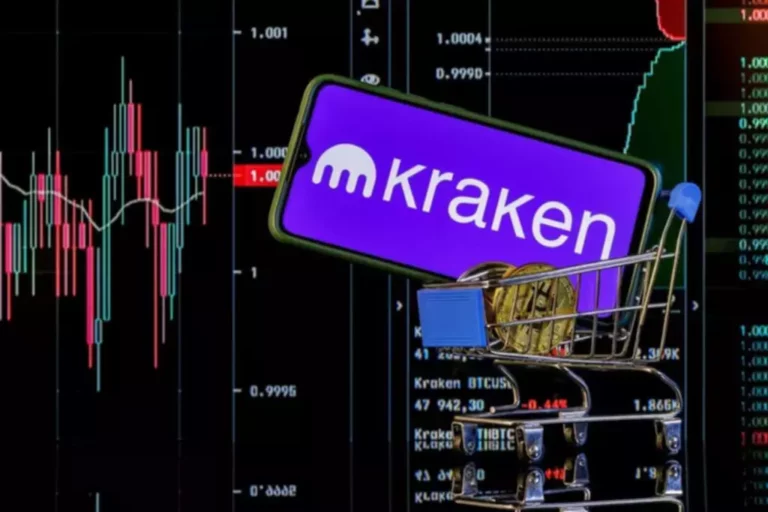Content
Defining what an IPO is doesn’t explain why a company “goes public” — an important detail in the process. Because an IPO requires a significant amount of time and resources, a business probably has good reason to go through the trouble. The company will also apply to list their stock on one of the different stock exchanges, like the New York Stock Exchange or Nasdaq Stock Exchange. Cryptopedia does not guarantee the reliability of the Site content and shall not be held liable for any initial exchange offerings errors, omissions, or inaccuracies. The opinions and views expressed in any Cryptopedia article are solely those of the author(s) and do not reflect the opinions of Gemini or its management. The information provided on the Site is for informational purposes only, and it does not constitute an endorsement of any of the products and services discussed or investment, financial, or trading advice.
F. Regulation and Security in IEOs

Additionally, they need to determine if their Initial Exchange Offering will have a hard or soft cap. A soft cap sets an initial goal to be reached but allows for more investments to trickle in afterward. When developers of a cryptocurrency project decide they want to organize an IEO, a complicated procedure must be followed before the first dollar can be raised. Crowdfunding is collecting small amounts of money from a bigger Initial exchange offering group of individuals. The advent of social media and digital platforms have expanded the possibilities for crowdfunding.
How Many Companies IPO Per Year? 2023 Trends
However, it’s important to know that many IPO stocks also tend to be untested, meaning their businesses are newer and less stable, and that the stock price can fluctuate — creating considerable risk for investors. If you want to purchase shares of a stock in an IPO, you’ll most commonly have to go through a broker. Some firms also let you buy shares at the offering price as opposed to the trading price once the stock is on the public market. Henry Goldman led investment https://www.xcritical.com/ bank Goldman Sachs’ first IPO — United Cigar Manufacturers Co. — in 1906, pioneering a new way of valuing companies. A challenge for retail companies at the time was that they lacked hard assets, as other big businesses like railroads had at the time.
- Binance allows users to purchase tokens on a “first-come, first-served” basis until the initial supply runs out.
- Because an IEO is facilitated by an exchange, the startups opting for this route have to be serious about their plan of action.
- Remember that investing in IEOs, like any investment in the cryptocurrency space, carries risks.
- A type of crowdfunding where crypto start-ups generate capital by listing through an exchange.
IPO vs Acquisition: Advantages and Disadvantages
IEOs play a crucial role in the crypto ecosystem by providing investors with a more secure and regulated environment. Unlike traditional Initial Coin Offerings (ICOs), IEOs involve a cryptocurrency exchange as an intermediary, which helps to vet the projects and reduce the risk of scams. This added layer of security attracts more investors, boosting the liquidity and visibility of new crypto projects. Binance launchpad, and the newly introduced launchpool, are platforms in the Binance ecosystem that helps projects bring their tokens to launch. They provide full service advisory service, from pre-launch to to post listing and marketing support.
The IEO is unique because the sale of these initial tokens is managed by an existing crypto asset exchange instead of directly by the project team. An IEO is a collaboration between crypto projects and cryptocurrency exchanges, where the exchange conducts the token sale on behalf of the project and lists the tokens immediately after the sale. This setup not only helps ensure a smoother and more regulated transaction but also provides the projects with an immediate market presence. An Initial Exchange Offering (IEO) is a fundraising mechanism where new cryptocurrency projects sell their tokens through a partnering exchange, leveraging its user base and trust to attract investments. Here’s a look at IEOs’ operational mechanisms, benefits and risks, future trends, and insights on the evolution of IEOs in the cryptocurrency landscape.
Even as blockchain technology is rapidly developing in myriad fields, it has already radically transformed the way businesses and organizations can raise capital and fund projects. The crypto market is generally optimistic about the future of IEOs, foreseeing continued growth and evolution. As global crypto adoption increases, IEOs could become more integrated with traditional financial systems, potentially leading to a more standardized approach across different regions and regulatory frameworks.

Some examples include BitTorrent (BTT), Band Protocol (BAND), Axie Infinity (AXS), Alpha Finance Lab (ALPHA), and WazirX (WRX). Other exchanges have also set up their own IEO platforms, each with its benefits, requirements, and potential drawbacks. Initial public offerings or IPOs are a key part of U.S. capital markets, allowing private businesses to enter the world’s biggest public market.
All exchanges that are offering IEOs require you to register or create an account on their platform. Exchanges also will require users to complete Know-Your-Customer (KYC) account verification before participating in an IEO. Finally, many exchanges require you to use their own native tokens in order to participate. For example, Binance requires users to use the Binance coin (BNB) and Huobi requires users to use Huobi Token (HT) in order to purchase tokens during an IEO.
Not all projects can rely on donations or contributions from generous asset holders. An IEO is often conducted when a new crypto project wants to launch its cryptocurrency or blockchain product but requires significant investment capital to do so. For investors, buying an IPO stock can be tempting because of the potential of getting in on a company’s growth early and benefiting from its expansion.
Thanks to regulators, particularly those in the United States, who felt the funding method skirted around the normal requirements for selling a security, they have come down hard on the ICO. But, while one funding mechanism is on the out, a slew of others have sprung up in its place. For blockchain projects that generate a lot of buzz, IEO platforms can help them raise capital quickly. Just look at BitTorrent, which managed to raise $7 million just 14 minutes after its listing on Binance Launchpad went live (it was later bought by Tron).
Goldman pushed to value companies based on their income or earnings, which remains a key part of IPO valuations today. Additionally, exchanges implement robust security measures to safeguard investor funds and personal information. Measures such as two-factor authentication, cold storage for funds, and regular security audits help maintain a secure trading platform. Exchanges act as intermediaries between investors and the startup, profiting from fees generated by services rendered during the due diligence process and funding phase. Though, there are various similarities between IEOs and ICOs, the former can be seen as an evolution of ICO because of legal influence and greater financial regulations within the cryptocurrency market.
• Companies typically hire investment bankers and lawyers to help them with the IPO process. Projects should probe the track record of the exchange, past IEO successes, and the level of support provided to listed projects. Similarly, investors should evaluate the exchange’s reputation, security measures, and the variety and quality of listed IEO projects. In contrast to an ICO, where the project team conducts the fundraising themselves, in an Initial Exchange Offering, the fundraising is done on a popular exchange’s fundraising platform.
Similar to any other industry, there is a lot of competition trying to attract investors. Not everyone can successfully attract investment capital through traditional means. From the roadshow that investment banks hold to inform potential investors about the company to when executives may ring the opening bell at a stock exchange, an IPO can bring out greater publicity for a company. • An IPO, or initial public offering, is when a privately owned company sells shares of the business to the general public for the first time. An IPO, or initial public offering, refers to privately owned companies selling shares of the business to the general public for the first time.
The investment bankers act as underwriters, or buyers of the shares from the company before transferring them to the public market. The underwriters at the investment bank help the company determine the offering price, the number of shares that will be offered, and other relevant details. The 2017 Initial Coin Offering frenzy underscored blockchain’s potential to empower both individual investors and businesses looking to raise capital. At the same time, ICOs made it clear that more reliable levels of quality assurance and second-market liquidity provisions were necessary in order to drive more sustainable methods of blockchain-based fundraising. To that end, Initial Exchange Offerings (IEOs) and Initial DEX Offerings (IDOs) were created to improve on past fundraising processes.
An IEO is different from an Initial Coin Offering (ICO) in that it’s made possible with the help of a cryptocurrency exchange like Binance. Projects can raise funds with the help of the exchange’s customer base and launch trading for their token shortly after. ICOs were the first method used by cryptocurrency companies to raise money.[7] Ethereum followed suit in 2014, raising about $18.3 million.
